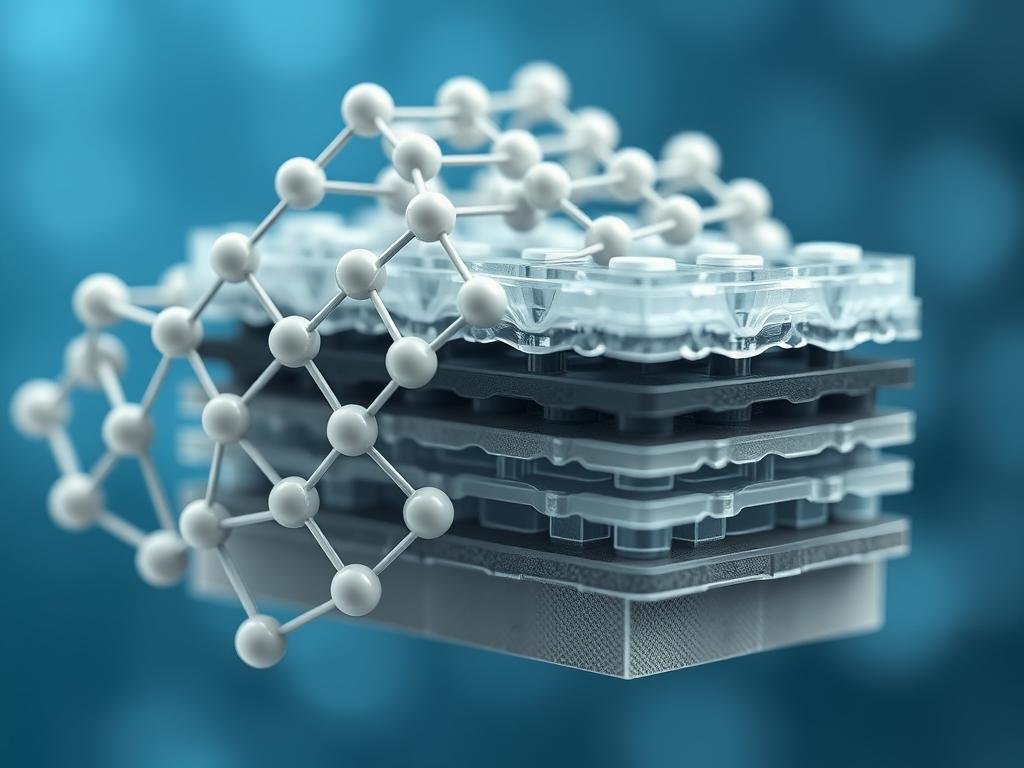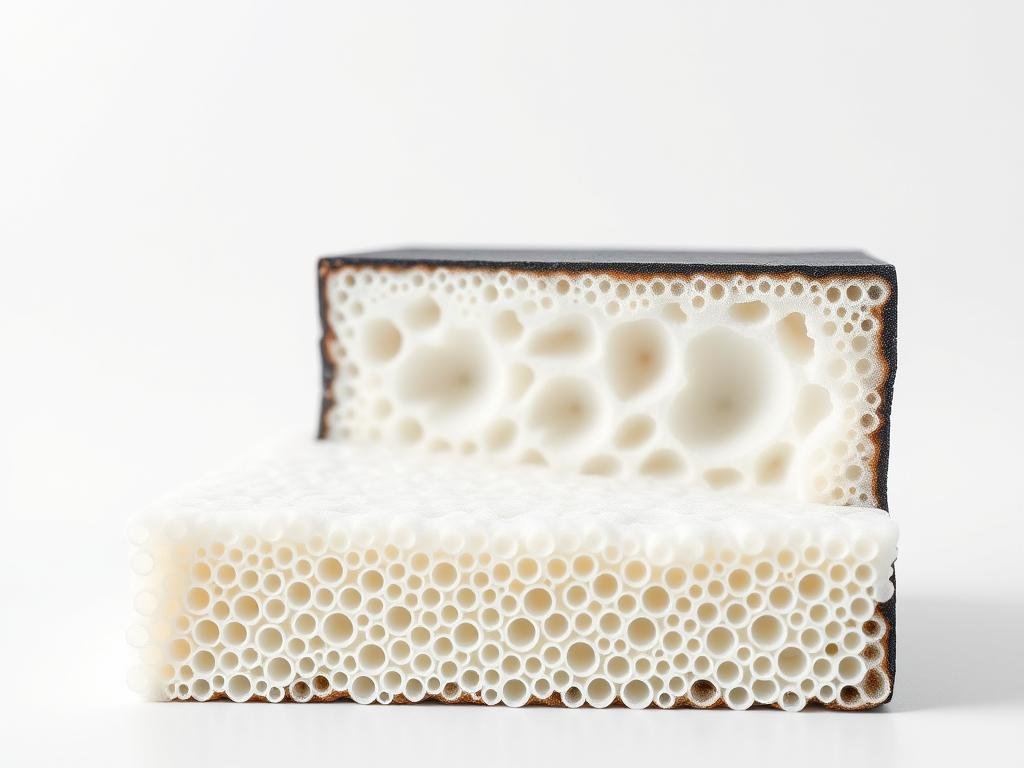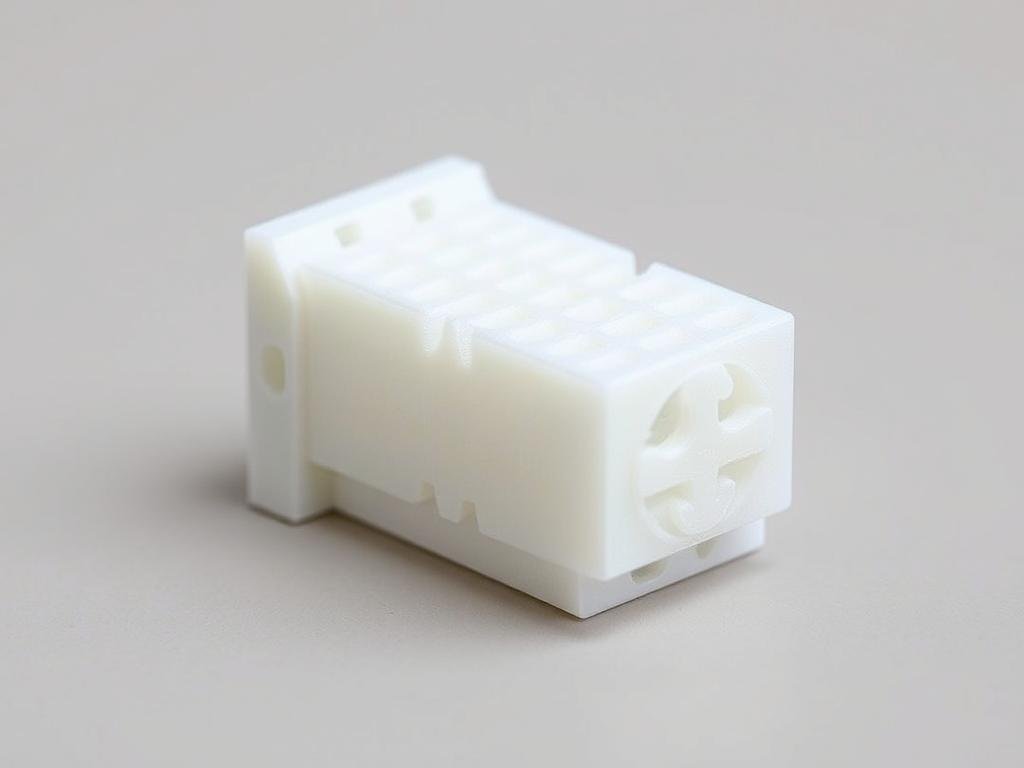丙烯腈-丁二烯-苯乙烯(ABS)是一種多功能的工程熱塑性塑料,具有出色的平衡能力 力量 和重量。
這個的獨特特性 聚合物 讓它成為工程師和設計師在多個行業中的首選。
密度範圍為 0.9-1.53 g/cm3,中位數密度為 1.07 g/cm3,ABS 明顯比許多金屬輕,同時保持令人印象深刻的機械性能。
這份全面指南將探討ABS的組成、密度變化以及多樣的應用,並分析其分子結構如何促成其卓越的強度與重量比。
理解ABS:組成與結構
ABS,或稱丙烯腈-丁二烯-苯乙烯,是一種廣受歡迎的塑膠材料,以其強度、剛性和抗衝擊性能的平衡而聞名。這種多功能的熱塑性塑膠被用於各種應用範圍,從消費電子產品到汽車零件。
什麼是丙烯腈-丁二烯-苯乙烯?
丙烯腈-丁二烯-苯乙烯是一種由三種主要單體:丙烯腈、丁二烯和苯乙烯所衍生的複雜材料。這些單體為ABS帶來不同的特性,使其成為一種堅固且多功能的材料,適用於各種製造工藝。
ABS的化學組成
ABS的化學成分是由其三種單體的組合而成。丙烯腈提供化學抗性和強度,丁二烯貢獻韌性和抗衝擊性,苯乙烯則提供剛性和易於加工。這些單體的比例可以調整,以製造出不同等級的ABS,適用於各種特定應用。

ABS 如何製造
ABS的製造過程始於其三個關鍵單體的生產。工業生產通常採用乳膠聚合或連續質量聚合方法。一旦製造完成,ABS可以通過多種方法進行加工,包括注塑成型、擠出和3D列印技術,從而創造出複雜的零件和專用等級。
不同的製造技術和添加劑組合創造出專門的ABS等級,針對特定應用進行優化。這些包括高衝擊等級、阻燃配方以及電鍍用變體,展現了材料在滿足多樣工業需求方面的多功能性。
| 製造過程 | 描述 | 應用程序 |
|---|---|---|
| 注塑成型 | 大量生產方法用於製作複雜零件 | 汽車零件,消費電子產品 |
| 3D列印 | 用於製作精細設計的增材製造技術 | 原型設計,航太零件,客製化零件 |
| 擠出 | 持續進行創建統一輪廓的流程 | 用於建築和汽車產業的管道、管子、型材 |
ABS 材料密度:主要規格與變化
ABS,或丙烯腈-丁二烯-苯乙烯,具有一個在其他熱塑性塑料中具有優勢的密度,適用於廣泛的用途。其密度是影響其在各行各業應用的關鍵因素,從汽車、航空航天到消費電子產品。

ABS的標準密度範圍
ABS的標準密度範圍在1.060到1.080 g/cm³之間。這個範圍是由其化學成分和製造過程所決定的。ABS的密度高於一些熱塑性塑膠,例如聚丙烯(PP),其密度不到1 g/cm³,但低於其他如聚碳酸酯(PC),其密度約為1.2 g/cm³。
影響ABS密度的因素
幾個因素可以影響ABS的密度,包括其化學成分、製造過程以及所使用的添加劑。其組成部分——丙烯腈、丁二烯和苯乙烯的比例,會影響其整體密度。此外,製造過程中的加工條件,例如溫度和壓力,也會影響材料的最終密度。
影響ABS密度的一些關鍵因素包括:
- 其組成單體的比例。
- 添加劑或填充物的存在。
- 所使用的具體製造過程。
與其他熱塑性塑料的密度比較
與其他常見熱塑性塑料相比,ABS 在密度範圍中處於中間位置。它比聚丙烯(0.9-0.91 g/cm³)重,但比聚碳酸酯(1.2-1.22 g/cm³)輕。這個比較對於材料選擇決策非常重要,尤其是在重量是關鍵因素的應用中。ABS 提供比許多競爭熱塑性塑料更優越的強度與重量比,使其在需要結構完整性和重量效率的應用中具有價值。
“材料的密度是一個基本特性,影響其適用於各種應用的程度。ABS,具有平衡的密度,是一種多用途的材料,滿足多個產業的需求。”
ABS 與其他熱塑性塑料之間的密度差異也會影響加工參數,較高密度的材料通常需要不同的機器設定以達到最佳生產效果。了解這些差異對於高效的材料加工與應用至關重要。
機械性能:ABS 背後的強度
ABS 背後的強度在於其複雜的機械性能,這些性能受到其組成和結構的影響。這些性能是通過橡膠增韌而產生的,在剛性基體中分散著細微的彈性體顆粒。
抗拉強度與抗衝擊性
ABS 以其卓越的抗拉強度和抗衝擊能力而聞名,成為對耐用性要求較高的應用中的熱門選擇。通過增加聚丁二烯在苯乙烯和丙烯腈中的比例,可以提升其抗衝擊能力,儘管這可能會引起其他性質的變化。
| Property | Value | 單位 |
|---|---|---|
| 拉伸強度 | 30-50 | 兆帕 |
| 抗衝擊性 | 100-200 | J/m |
熱變形與耐溫性
ABS 也展現出優異的耐熱變形和耐溫性能,能在各種熱條件下維持其結構完整性。ABS 的耐熱性可以透過配方調整進一步提升。
密度如何影響機械性能
ABS的密度與其機械性能直接相關。較高密度的配方通常展現出更大的剛性、硬度和耐熱性,但可能會犧牲一些抗衝擊性能。製造商可以策略性地調整密度,以優化特定的機械性能,滿足特定應用的需求。
- 密度與機械性能之間的關係根源於分子堆積效率,較緊密的分子排列會導致較強的分子間作用力。
- 了解這種關係使工程師在選擇特定的ABS等級時能做出明智的決策,平衡重量考量與機械需求。
應用程序利用ABS密度與強度比率
ABS材料的多功能性在於其利用密度與強度比的多樣應用中展現出來。
汽車與航空航天零件
ABS 在汽車和航空航天產業中被廣泛用於製造需要高強度和輕量化的零件。
消費電子產品與家電
該材料的抗衝擊性和成型便利性使其非常適合用於消費電子產品和家電,例如電視外殼和廚房電器零件。
3D列印應用
ABS 是一個在3D列印中很受歡迎的選擇,因為它使用方便且列印零件具有耐用性。它用於原型製作、最終用途零件和模型。

醫療與健康照護用途
ABS 在醫療和健康照護領域中被用於各種應用,包括診斷設備外殼、實驗室設備以及醫療器材外殼,因其與滅菌方法的相容性和化學抗性。
- 醫療與保健領域利用ABS於各種應用,包括診斷設備外殼、實驗室儀器、手術器械手柄以及醫療設備外殼。
- ABS 與滅菌方法的相容性,特別是伽馬射線和環氧乙烷(EtO),使其適用於需要無菌保證的一次性醫療元件和設備。
- 該材料對於在醫療環境中常用的多種消毒劑和清潔劑具有化學抗性,確保在醫療場所中的長期耐用性和外觀保持。
結論:輕量化工程中ABS的未來
ABS 正逐漸成為輕量化工程中的基石材料,原因在於其平衡的性能特性和成本效益。作為一種兼具強度與輕量化特性的材料,ABS 在具有嚴格使用要求或需要節省重量的零件中,具有極高的成本效益。
ABS的未來展望充滿希望,隨著先進配方和製造工藝的持續發展。新興趨勢包括複合ABS材料的開發以及將ABS整合到多材料設計方法中。 處理技術的進步, 特別是在增材製造方面,也為複雜且輕量的ABS結構開啟了新的可能性。
塑造未來ABS的關鍵趨勢包括:
- 結合奈米材料與回收內容的複合ABS材料的開發,以提升機械性能並解決永續性問題。
- 透過包覆成型和共擠技術,將ABS整合到多材料設計中。
- 複雜輕量結構的增材製造持續進步。
隨著減重在各行各業變得越來越重要,ABS的多功能性和平衡性能使其在未來數十年內仍將是輕量化工程中的重要材料。
